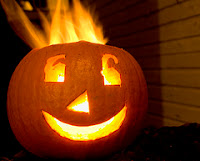December 2011 – Festive lighting, windowsill candles and ornamented Christmas trees are staples of the holidays, but these decorative items also pose a fire risk if handled improperly. In 2005-2009, on average, one of every 18 reported home Christmas tree fires resulted in a death, compared to an average of one death per 141 total home fires.
Holiday lights and other decorative lighting were involved in an estimated average of 150 home fires per year during the same time. These fires caused an average of eight civilian deaths, 14 injuries, and $8.5 million in direct property damage per year.
“December is an exciting time where almost every home on the block is accented with decorations and seasonal lighting,” said Lorraine Carli, vice president of communications for the National Fire Protection Association (NFPA). “Though decorations such as candles or Christmas trees certainly spread holiday cheer, it is important to follow basic safety steps so celebrations go off without a hitch.”
Video: A demonstration showing how flammable a dry Christmas tree can be as opposed to a tree watered regularly.
Here are NFPA’s tips for safe holiday decorating:
- Be careful with holiday decorations. Choose decorations that are flame resistant or flame retardant.
- Keep lit candles away from decorations and other things that can burn.
- Use lights that have the label of an independent testing laboratory. Check the packaging; some lights are only for indoor use.
- Replace any string of lights with worn or broken cords or loose bulb connections. Connect no more than three strands of mini light sets and a maximum of 50 bulbs for screw-in bulbs.
- Use clips, not nails, to hang lights so the cords do not get damaged.
- Keep decorations away from windows and doors.
For proper Christmas tree safety:
- Keep your tree well watered. A dry tree can be extremely dangerous. See how flammable a dry Christmas tree can be in comparison to a well-watered tree in a demonstration by NFPA.
- Replace any string of lights with worn or broken cords or loose bulb connections. Connect no more than three strands of mini string sets and a maximum of 50 bulbs for screw-in bulbs.
- Never use lit candles to decorate the tree.
- Always turn off Christmas tree lights before leaving home or going to bed.
- Get rid of the tree when it is dry. Check with your local community to find a recycling program.
- Bring outdoor electrical lights inside after the holidays to prevent hazards and make them last longer.
About the National Fire Protection Association (NFPA) NFPA is a worldwide leader in fire, electrical, building, and life safety. The mission of the international nonprofit organization founded in 1896 is to reduce the worldwide burden of fire and other hazards on the quality of life by providing and advocating consensus codes and standards, research, training, and education.

















